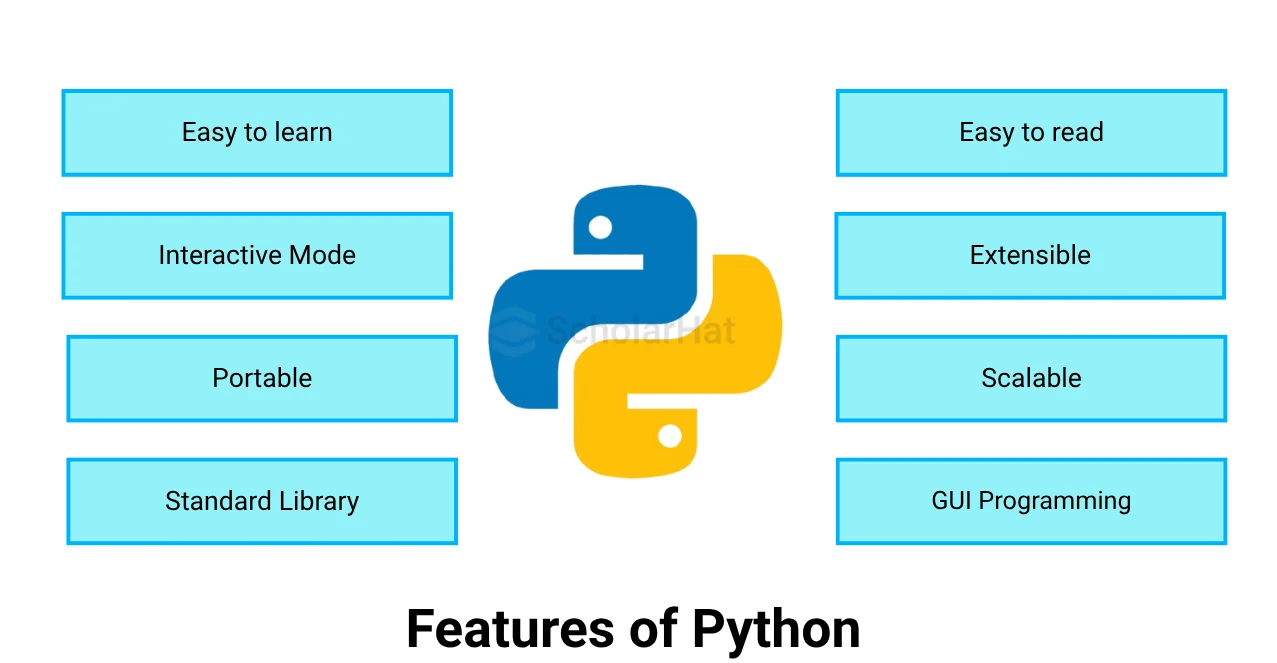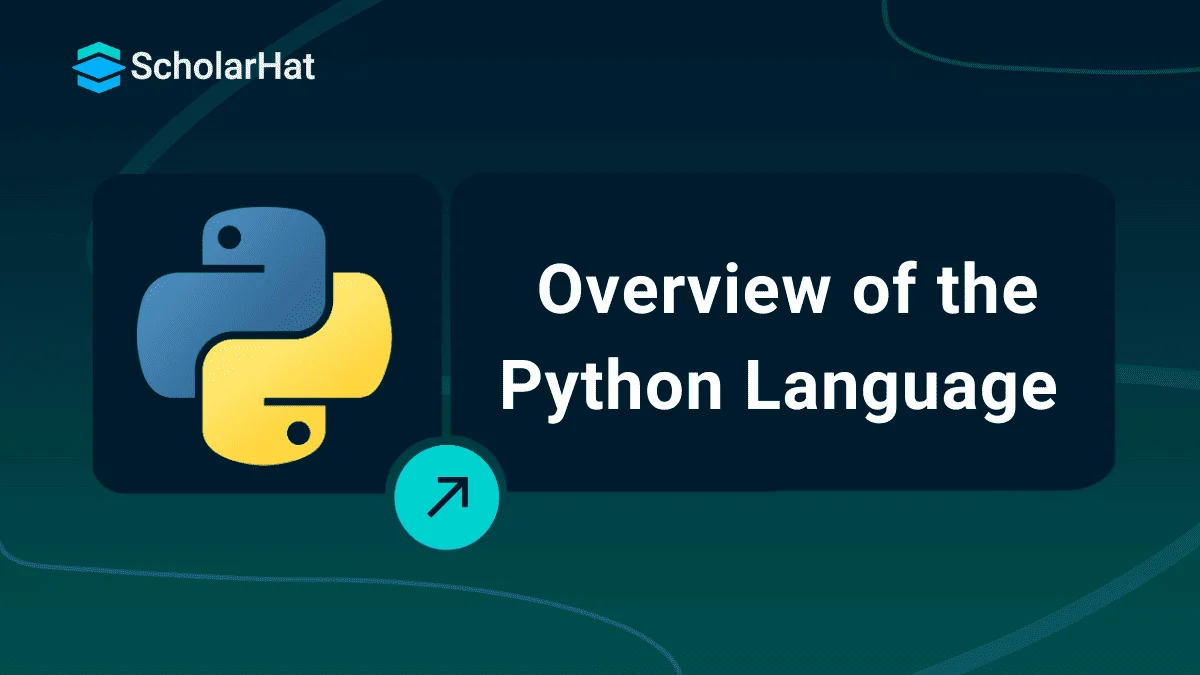19
DecWhat is Python Language? Overview of the Python Language
Introduction to the Python Language: An Overview
Hello there! Python, an interesting and adaptable programming language, is an excellent choice for both beginners and experts. Python Tutorial is well-known for its readability and simplicity, and it is used to power everything from web development to artificial intelligence.
Python developers earn 40% more than average programmers. Start your Free Online Course for Python now and unlock high-paying jobs!
What is Python?
Python is a general-purpose, high-level programming language. It is intended to be simple to understand and use, and it is often used by beginners. Python is also extremely adaptable, with applications ranging from web programming to data science and machine learning.
History of Python
- 1989: Guido van Rossum begins working on Python.
- 1991: Python 0.9.0 is released.
- 1994: Python 1.0 is released.
- 2000: Python 2.0 is released.
- 2008: Python 3.0 is released.
- 2010: Python 2.6 is released, which is the last major release of Python 2.x.
- 2014: Python 3.4 is released.
- 2020: Python 3.9 is released, which is the current stable version of the language.
What can Python do?
- Web applications can be developed on a server using Python.
- Workflows can be created with Python when used with other tools.
- Python has database system connectivity. It can read and edit files.
- Large data handling and complex mathematical operations are possible with Python.
- Python can be used to produce software that is ready for production or quick prototyping.
Read More - 50 Python Interview Questions
Why Python?
- Many platforms, including Windows, Mac, Linux, Raspberry Pi, etc., support Python.
- Python's syntax is simple and parallels that of English.
- Python has a syntax that makes it possible for programmers to write programs in fewer lines than some other languages.
- Python is an interpreter-based programming language, which means that code can be run immediately upon writing.
- Prototyping can, therefore, be completed relatively quickly.
- Python can be handled functionally, object-orientedly, or procedurally.
Features of Python
- Easy to Learn
- Easy to Read
- GUI Programming
- Extendable
- Interactive Mode
- Standard Library
- Portable
- Scalable

Where is Python used?
Python is a widely used general-purpose programming language that finds usage in almost all technical domains. These are the several domains in which Python is used:- Data Science: Due to its simplicity, ease of use, and accessibility to solid libraries for data analysis and visualization like NumPy, Pandas, and Matplotlib, Python is an essential language for this broad subject.
- Desktop Applications: Graphical User Interface (GUI)-based desktop applications can make use of the helpful libraries PyQt and Tkinter. Although it can be used to create applications in other languages, there are superior languages for this industry.
- Console-based Apps: Because of its simplicity of use and support for sophisticated features like input/output redirection and piping, Python is also frequently used to construct command-line or console-based programs.
- Mobile Applications: Although Python is not frequently used to construct mobile applications, cross-platform mobile applications may still be made by combining them with frameworks like Kivy or BeeWare.
- Software Development: Python is regarded as one of the greatest languages for developing software. Python works well with a wide range of software, from small to large scale.
- Artificial Intelligence (AI): TensorFlow, Keras, and PyTorch are just a few of the robust libraries that make Python an ideal language for AI and machine learning. AI is an expanding field of technology.
- Web Applications: Python is frequently used in web development, both on the front end with HTML and JavaScript and on the back end with frameworks like Django and Flask.
- Enterprise Applications:Python may be used to create sophisticated enterprise applications, with features like distributed computing, networking, and parallel processing.
- Applications for 3D Computer-Aided Design (CAD): Blender and other libraries make it possible to use Python for 3D CAD applications.
- Machine Learning:Python is a popular choice for machine learning because of its simplicity, usability, and plenty of robust machine learning libraries.
- Computer Vision or Image Processing Applications:Python may be utilized for applications related to computer vision and image processing, thanks to robust libraries like Scikit-image and OpenCV.
- Speech Recognition: PyAudio and SpeechRecognition are two libraries that can be used with Python to create voice recognition apps.
- Scientific computing: For activities like data analysis, machine learning, and more, libraries like NumPy, SciPy, and Pandas offer sophisticated numerical computing capabilities.
- Education: Python is a great language for teaching programming to beginners because of its simple syntax and abundance of resources.
- Testing: Python is used to create automated tests. It offers frameworks for building test cases and generating reports, such as unit tests and the pytest.
- Gaming: Python has modules such as Pygame that offer a framework for creating games in the language.
- Internet of Things: Python is used in IoT to create apps and scripts for gadgets like Arduino, Raspberry Pi, and other similar devices.
- Networking: Scripts and programs for network automation, monitoring, and management are developed using Python in networking.
- DevOps: Automation and scripting of deployment, configuration, and infrastructure management procedures are common uses of Python in DevOps.
- Finance: Pandas, Scikit-learn, and Statsmodels are just a few of the Python libraries available for financial modeling and analysis.
- Audio and music: Python includes libraries such as Pyaudio, which synthesizes, analyzes, and processes audio, and Music21, which generates and analyzes music.
- Writing scripts:Python utility scripts can automate data processing, web scraping, file operations, and other tasks.
Read More - Python Developer Salary in India
Python Framework & Libraries
The following is a list of some of the most widely used Python libraries and frameworks:Web Development
- Django: A high-level Python web framework that encourages rapid development and clean, pragmatic design.
- Flask: A lightweight Python web framework that is easy to learn and use.
- Bottle: A fast and simple Python web framework that is ideal for small projects.
- CherryPy: An object-oriented Python web framework that is powerful and flexible.
- Web2Py: A full-stack Python web framework that is easy to use and includes a database abstraction layer.
- FastAPI: A high-performance Python web framework for building APIs.
- Pyramid: A powerful and flexible Python web framework that is based on the WSGI standard.
- Tornado: A non-blocking Python web framework that is ideal for real-time applications.
Data Science and Machine Learning
- Scikit-learn: A comprehensive machine learning library for Python.
- Numpy: A fundamental library for scientific computing in Python.
- Pandas: A powerful data analysis and manipulation library for Python.
- TensorFlow: A popular library for developing and training machine learning models.
- PyTorch: Another popular library for developing and training machine learning models.
- Keras: A high-level neural networks library for Python.
- Matplotlib: A plotting library for creating charts and graphs in Python.
- Seaborn: A statistical data visualization library for Python.
Other Popular Libraries
- Requests: A library for making HTTP requests in Python.
- BeautifulSoup: A library for parsing and extracting data from HTML and XML documents.
- Scrapy: A web scraping framework for Python.
- SQLAlchemy: An object-relational mapper (ORM) for Python.
- PyQt: A cross-platform GUI toolkit for Python.
- Kivy: A GUI framework for creating cross-platform applications with Python.
- PySide: A GUI framework for creating cross-platform applications with Python.
- PySimpleGUI: A lightweight GUI framework for creating desktop applications with Python.
Summary
Python is an easy-to-learn, high-level, general-purpose programming language. It is adaptable and useful for many different activities, such as developing scripts, web development, data science, and machine learning. There is a sizable and vibrant Python development community, and the language may be learned through a variety of methods.Full-Stack Python Developers earn 50–70% more than basic coders. Join our Full-Stack Python Developer Training and skyrocket your salary!
FAQs
Take our Python skill challenge to evaluate yourself!

In less than 5 minutes, with our skill challenge, you can identify your knowledge gaps and strengths in a given skill.






